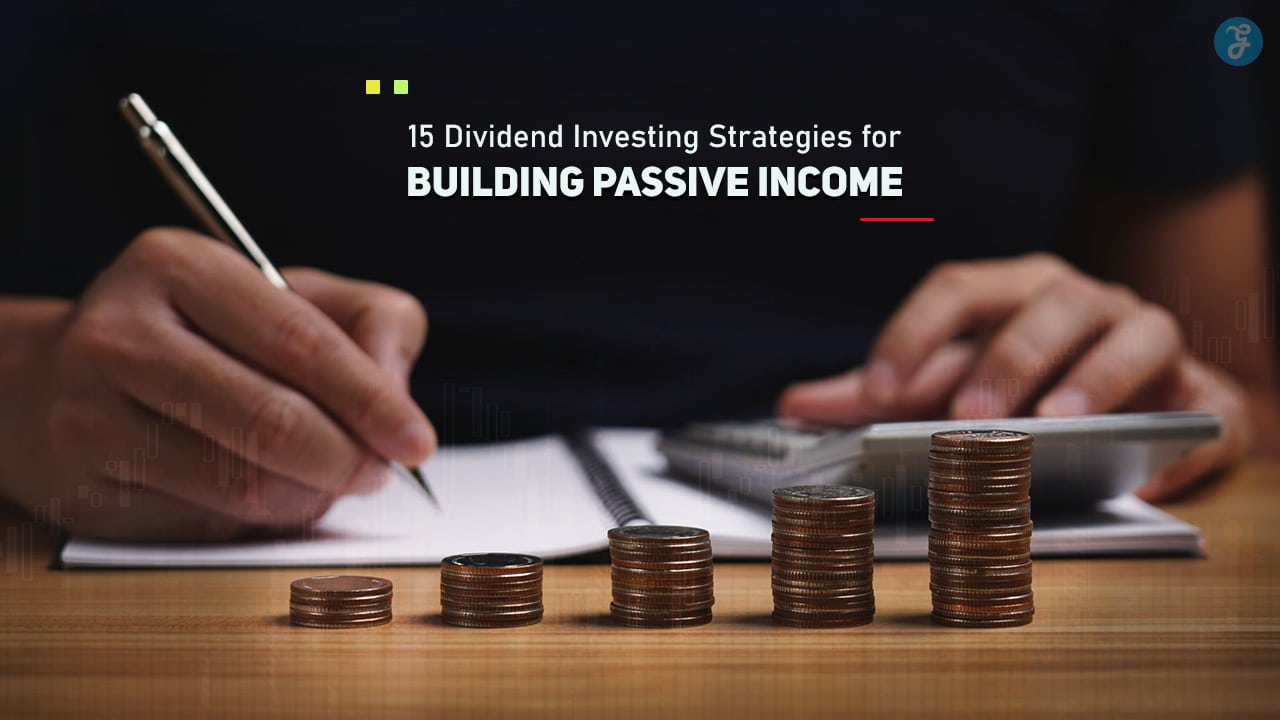Investing in dividend-paying stocks is one of the most reliable ways to build passive income and achieve financial independence. Dividends provide a steady cash flow, allowing investors to reinvest for compound growth or supplement their income without selling assets.
With the right strategies, dividend investing can help you grow wealth over time while minimizing risks.
In this comprehensive guide, we’ll explore 15 dividend investing strategies to help you build a sustainable stream of passive income. Whether you’re a beginner or an experienced investor, these strategies will give you the tools you need to succeed.
1. Start with Dividend Aristocrats
What Are Dividend Aristocrats?
Dividend Aristocrats are S&P 500 companies that have increased their dividends for at least 25 consecutive years.
Why They’re Reliable
- Proven track record of consistent payouts.
- Financially stable companies with strong cash flow.
- Lower risk during economic downturns.
Example: Procter & Gamble, Coca-Cola, and Johnson & Johnson are popular Dividend Aristocrats.
Pro Tip: Use Dividend Aristocrats as the foundation of your portfolio for stability and reliable income.
2. Focus on Dividend Yield and Growth
Key Metrics
- Dividend Yield: The annual dividend divided by the stock price, expressed as a percentage.
- Dividend Growth Rate: The rate at which a company increases its dividend payouts over time.
Strategy
- Look for companies with a dividend yield between 2% and 6%.
- Prioritize businesses with a consistent dividend growth rate above 5%.
Example: A stock with a 4% yield and a history of increasing payouts by 6% annually can significantly boost income over time.
3. Diversify Across Sectors
Why It’s Important
Diversification reduces risk by spreading investments across different industries.
How to Diversify
- Invest in dividend-paying stocks from sectors like healthcare, utilities, technology, and consumer goods.
- Avoid overconcentration in a single sector, such as energy, which can be volatile.
Pro Tip: Use ETFs like the Vanguard Dividend Appreciation ETF (VIG) to diversify efficiently.
4. Reinvest Dividends
Why Reinvestment Matters
Reinvesting dividends allows you to purchase more shares, compounding your returns over time.
How to Reinvest
- Use a Dividend Reinvestment Plan (DRIP) to automatically reinvest payouts into additional shares.
- Choose companies with no-fee DRIPs to maximize returns.
Example: Reinvesting $1,000 in annual dividends at an 8% annual growth rate can grow to $10,000 in 30 years.
5. Evaluate Payout Ratios
What Is the Payout Ratio?
The payout ratio is the percentage of earnings a company pays out as dividends.
Ideal Range
- Look for companies with a payout ratio between 40% and 60%.
- Avoid companies with payout ratios above 80%, as they may struggle to sustain dividends.
Example: A company earning $5 per share and paying a $2 dividend has a 40% payout ratio, leaving room for growth.
6. Choose Blue-Chip Stocks
What Are Blue-Chip Stocks?
Blue-chip stocks are large, well-established companies with a history of strong financial performance.
Why Invest in Blue-Chips?
- Reliable dividend payouts.
- Resilient during economic downturns.
- Often part of the Dividend Aristocrats list.
Example: IBM, 3M, and PepsiCo are blue-chip stocks known for their steady dividends.
7. Monitor Free Cash Flow
Why It’s Important
Free cash flow (FCF) measures the cash a company has left after covering operating expenses and capital expenditures.
How to Use FCF
- Choose companies with positive and growing free cash flow.
- Ensure the company can cover dividends and reinvest in growth.
Pro Tip: High free cash flow indicates a company’s ability to sustain and grow dividends.
8. Consider REITs for High Yields
What Are REITs?
Real Estate Investment Trusts (REITs) are companies that own and operate income-generating real estate.
Why REITs Are Attractive
- Offer high dividend yields (often 4%-8%).
- Required by law to distribute 90% of taxable income as dividends.
Example: Public Storage (PSA) and Realty Income (O) are popular REITs with consistent payouts.
9. Assess Financial Health
Key Metrics
- Debt-to-Equity Ratio: Low ratios indicate financial stability.
- Earnings Growth: Positive earnings growth supports dividend increases.
How to Assess
- Use tools like Morningstar or Yahoo Finance to review financial statements.
- Look for companies with manageable debt levels and stable earnings.
Pro Tip: Avoid companies with declining earnings or excessive debt.
10. Aim for Tax Efficiency
Why It Matters
Dividends are often taxed at a lower rate than regular income, but understanding tax implications can maximize your returns.
Strategies
- Hold dividend-paying stocks in tax-advantaged accounts like IRAs.
- Focus on qualified dividends, which are taxed at the lower capital gains rate.
Example: A qualified dividend may be taxed at 15%, compared to 22% for ordinary income.
11. Invest in International Dividend Stocks
Why Go Global?
International stocks can offer higher yields and exposure to different markets.
How to Invest
- Research ADRs (American Depositary Receipts) for foreign dividend stocks.
- Consider ETFs like the iShares International Dividend Growth ETF (IGRO).
Example: Companies like Nestlé and Unilever provide stable dividends and global diversification.
12. Look for Low Volatility Stocks
Why It’s Important
Low-volatility stocks provide stable returns, making them ideal for conservative dividend investors.
How to Identify
- Look for companies with a beta below 1.
- Choose industries like utilities and consumer staples, which perform well in most market conditions.
Example: Utility companies like Duke Energy (DUK) are known for their low volatility and steady dividends.
13. Regularly Review Your Portfolio
Why Reviews Are Essential
Economic conditions and company performance can change, affecting dividends.
What to Review
- Dividend yields and growth rates.
- Financial health and payout ratios.
- Sector performance and diversification.
Pro Tip: Rebalance your portfolio annually to maintain your desired allocation.
14. Focus on Total Return
What Is Total Return?
Total return includes both dividend income and capital appreciation.
Why It Matters
Focusing solely on high yields can lead to poor investments if stock prices decline.
How to Balance
- Choose stocks with moderate yields and strong growth potential.
- Avoid “yield traps” with unsustainable payouts.
Example: A stock with a 3% yield and 10% annual growth offers a better total return than a high-yield stock with no growth.
15. Stay Patient and Consistent
Why Patience Pays Off
Dividend investing is a long-term strategy that requires consistency and discipline.
How to Stay Consistent
- Reinvest dividends to compound your returns.
- Stick to your plan during market fluctuations.
Pro Tip: Remember Warren Buffett’s advice: “The stock market is a device for transferring money from the impatient to the patient.”
Takeaways
Dividend investing offers a reliable path to building passive income and achieving financial independence.
By following these 15 strategies—ranging from focusing on Dividend Aristocrats to reinvesting dividends and diversifying across sectors—you can create a sustainable income stream while growing your wealth.
Start implementing these strategies today, and watch your passive income grow steadily over time. With patience and a solid plan, dividend investing can help you achieve your financial goals.















































